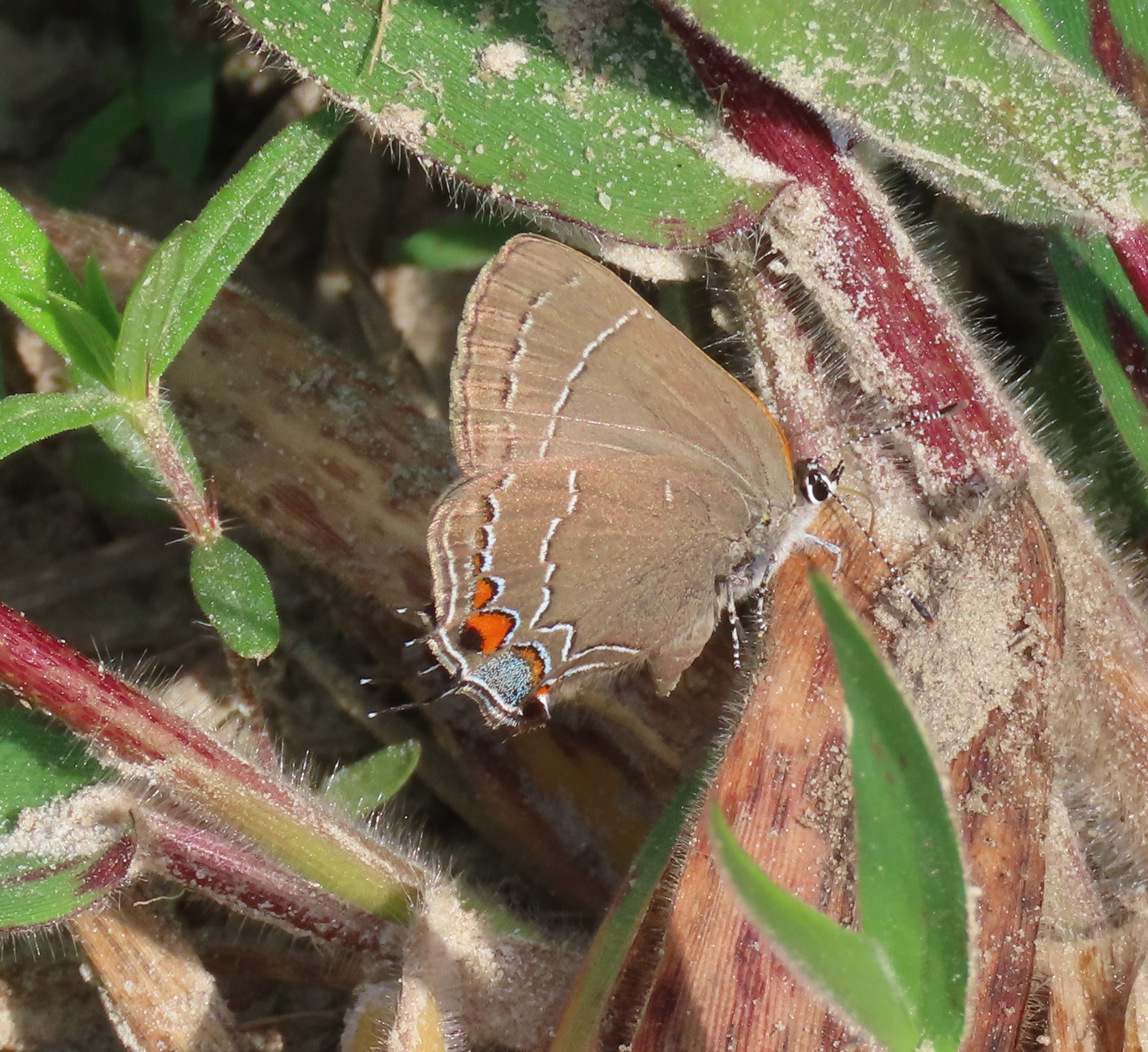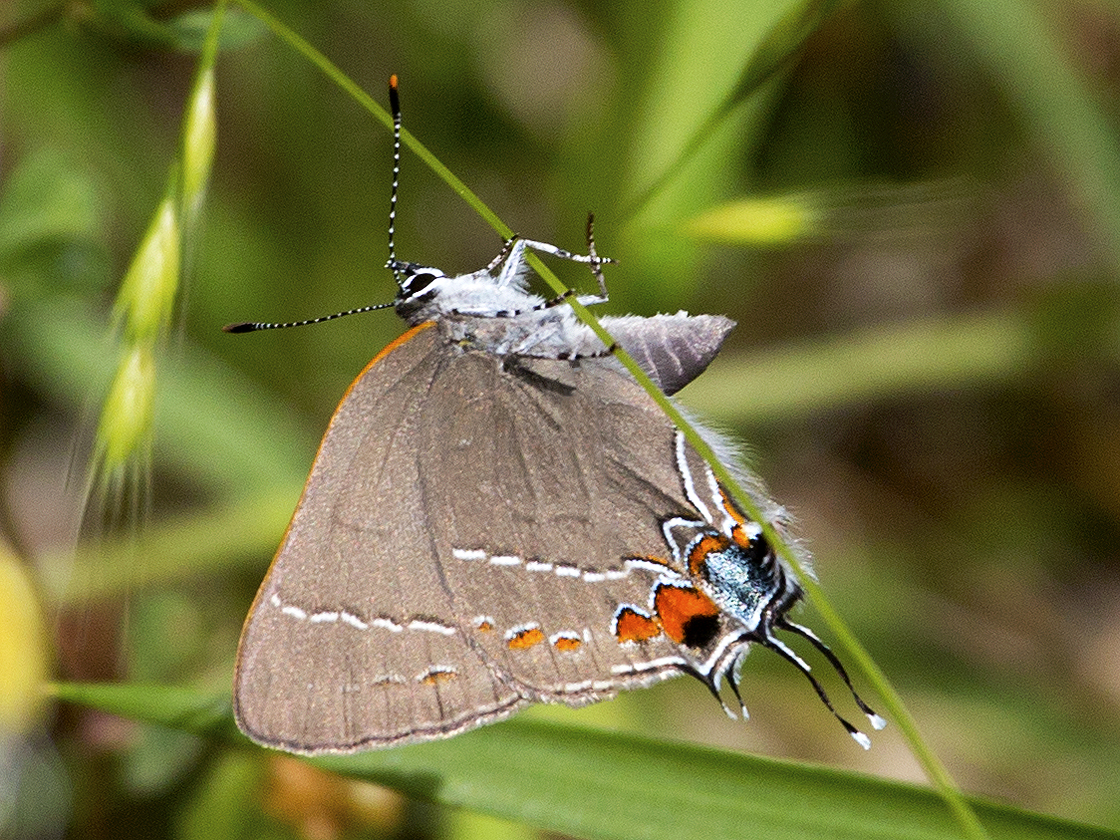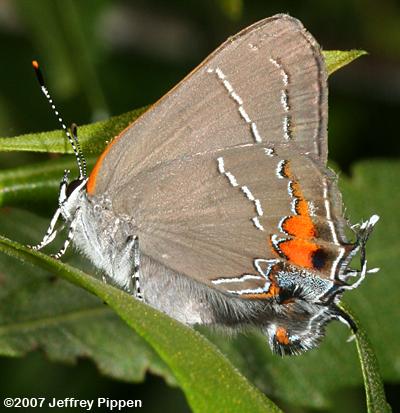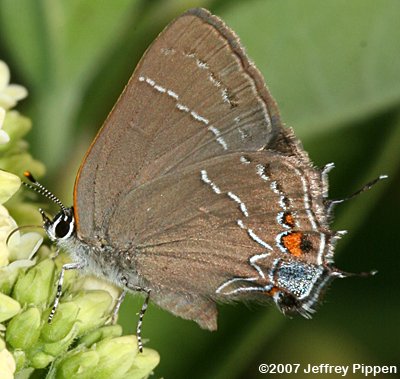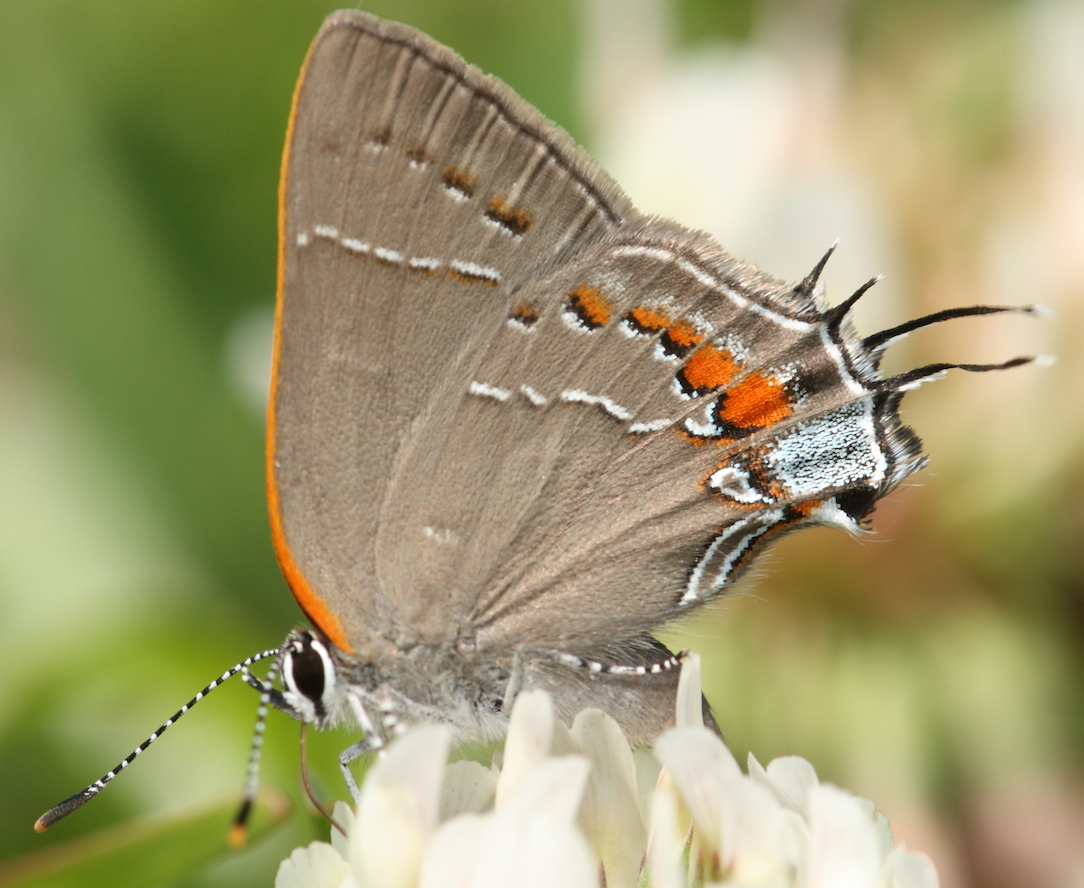|
| Common Name | Oak Hairstreak by Shay Garriock => northern subspecies - 5/13/07 Chatham Co. NC
[View PDF]
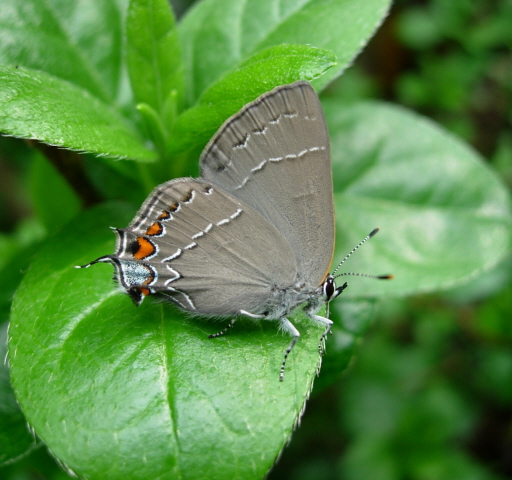 Click to enlarge Click to enlarge
[Google Images] GBIF [Global Distribution ] BoA [Images ] iNaturalist |
| Scientific Name | Satyrium favonius
|
| Link to BAMONA species account. |
| Map | Click on a county for list of all database records for the species in that county.
 |
| Distribution | DISTRIBUTION: Mainly in the lower Coastal Plain and in the Sandhills, but it does occur very sporadically over the Piedmont; extremely rare in the Mountains (with records for just two counties). Seeming absence over most of the interior of the Coastal Plain is baffling; part can be attributed to poor field effort, though it is obviously very rare (at best) there.
|
| Abundance | ABUNDANCE: Uncommon to locally common very close to the southern coast, but generally rare close to the coast farther northward, typically in maritime forests and thickets. Very rare farther inland, and practically absent over nearly all of the Mountains. Away from the coast, most likely to be encountered in the Sandhills region. At times, five or more individuals can be seen in one or two hours in Brunswick and New Hanover counties, almost always in association with evergreen oak species.
|
| Flight | FLIGHT PERIOD: A single brood; early or mid-May to mid-June in the Coastal Plain and Piedmont; probably in June in the Mountains. This is certainly the earliest flying Satyrium species, and a few individuals have been seen in early May. Its peak appears to be around May 20.
|
| Habitat | HABITAT: This species is most numerous in or near stands of evergreen oaks, such as Live Oak (Quercus virginiana) or Darlington Oak (Q. hemisphaerica) in maritime forests and "sandhill" scrub forests. Farther inland, it is found in dry forests dominated by deciduous oak species. In the Sandhills, it is found mainly in xeric stands of scrub oak species.
|
|
| | Plants | FOOD AND NECTAR PLANTS: The foodplants are oaks; Live Oak is probably favored over others in NC. Nectar plants are typical for most hairstreaks, though Allegheny Chinquapin (Castanea pumila) has been reported as a favorite. Along the southern coast, Sparkleberry (Vaccinium arboreum) is the chief nectar source.
|
| Comments | COMMENTS: This is another of the rare hairstreaks, and it is difficult to find even with a purposeful search, except in a few maritime forests and thickets along the southern coast. The Oak Hairstreak is to be searched for along the coast, particularly in maritime forests such as Buxton Woods, Fort Fisher, Bald Head Island, and the Ocean Isle Beach/Sunset Beach area. From the Fort Fisher area southwest into SC, the southern subspecies (Satyrium favonius favonius), formerly called the "Southern Hairstreak", appears to be present (based on photos taken by Jeff Pippen and others), at the northern edge of its range. Also, the Pitt County record, a specimen from May 1977, is considered to be of this same subspecies (fide Alex Grkovich). However, there may be a mixing of characters in these butterflies with the nominate "Northern Hairstreak" (S. favonius ontario), which ranges over much of the Eastern states, including the interior of NC. Away from maritime forests, the species would be expected to be found only by chance. The NC range was expanded westward in 2000 by the photographing of individuals by Randy Emmitt in Caswell County and by Bruce Grimes in Alleghany County (a first record for the Mountains), and I saw two individuals at Crowders Mountain State Park in Cleveland County in 2001. In 2023, K. Bischof observed one at Gorges State Park in Transylvania County, a first report for the southern half of the Mountains. In the past several years, Taylor Piephoff has found a few small colonies on the mainland side of Ocean Isle Beach. A remarkable one-day count of 68 was made in 2020 in New Hanover County, and another excellent count was 54 in Carteret County in 2021.
|
State Rank | S3 | | State Status | SR |
Global Rank | G4G5 | | Federal Status | |
| Synonym | Fixsenia favonius
|
| Other Name | Southern Hairstreak, Northern Hairstreak
|
|
|

 >>
>>